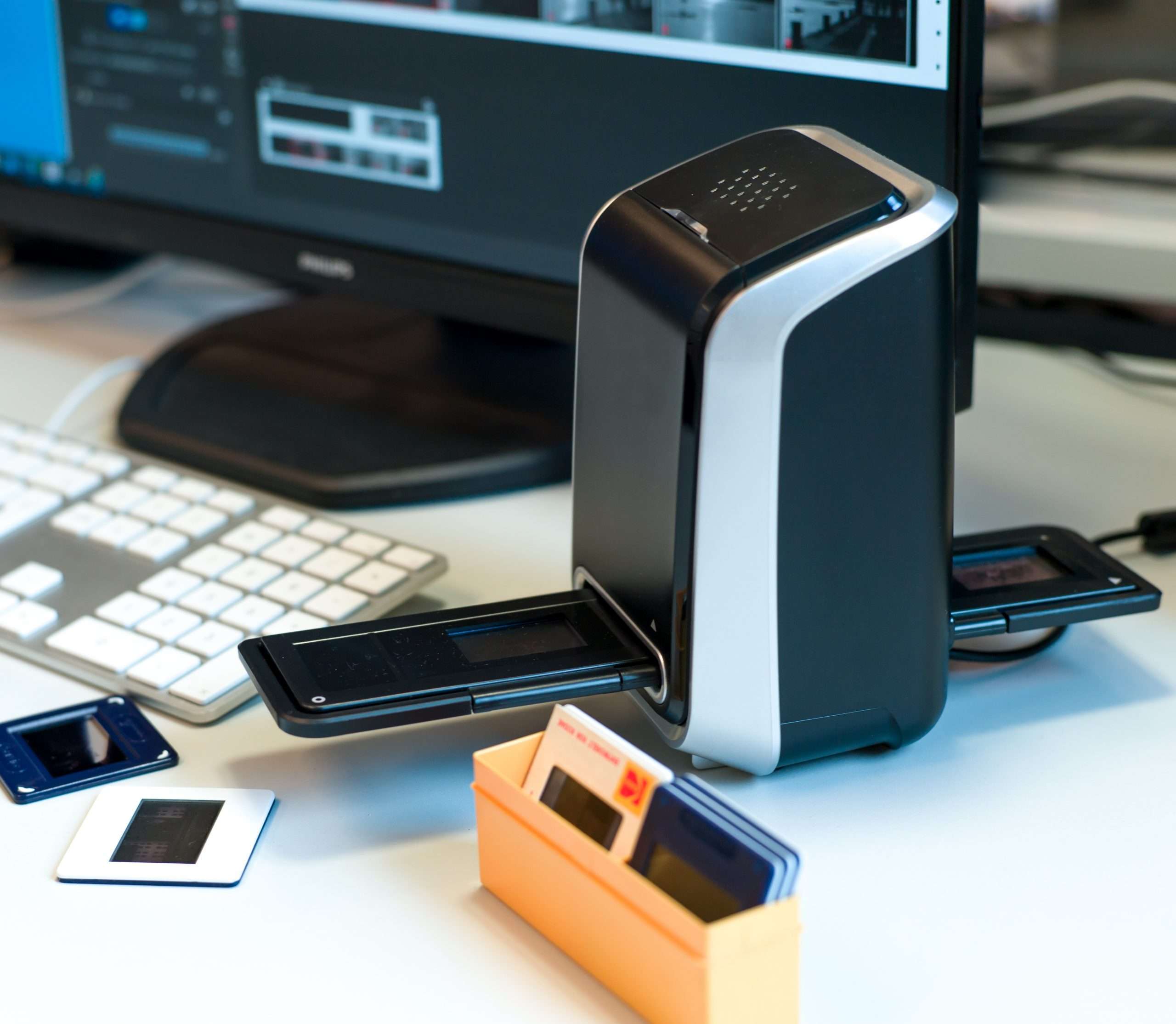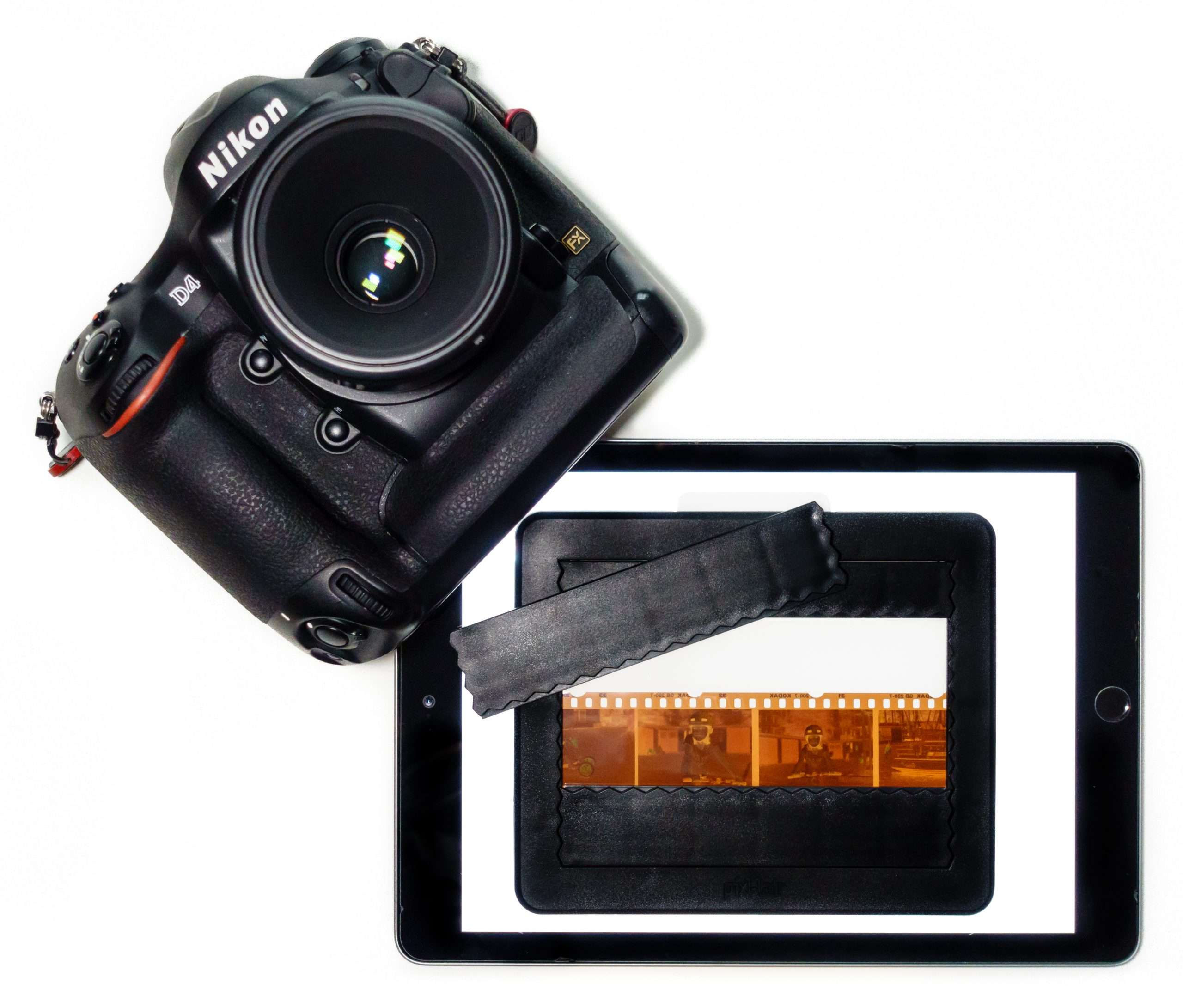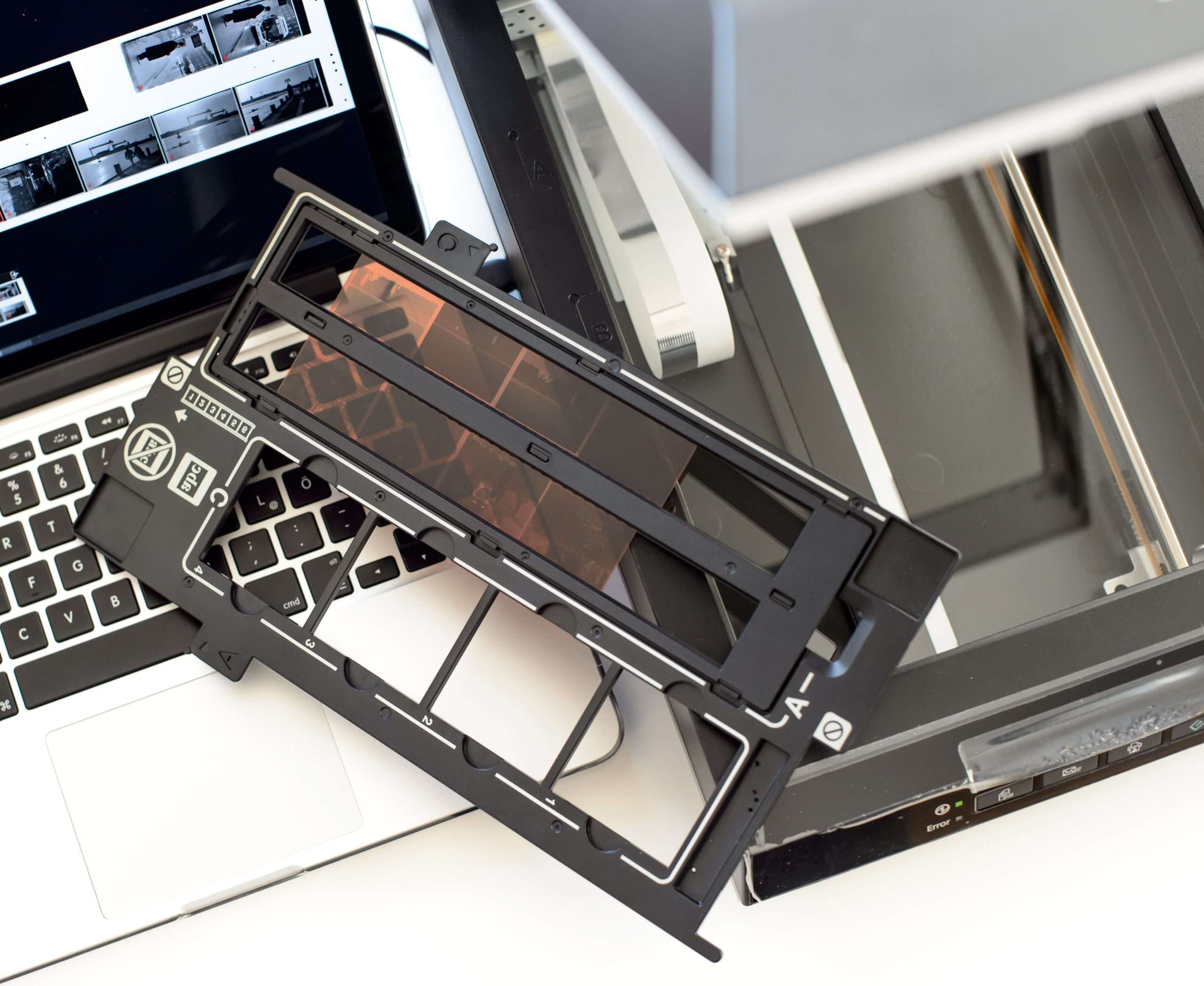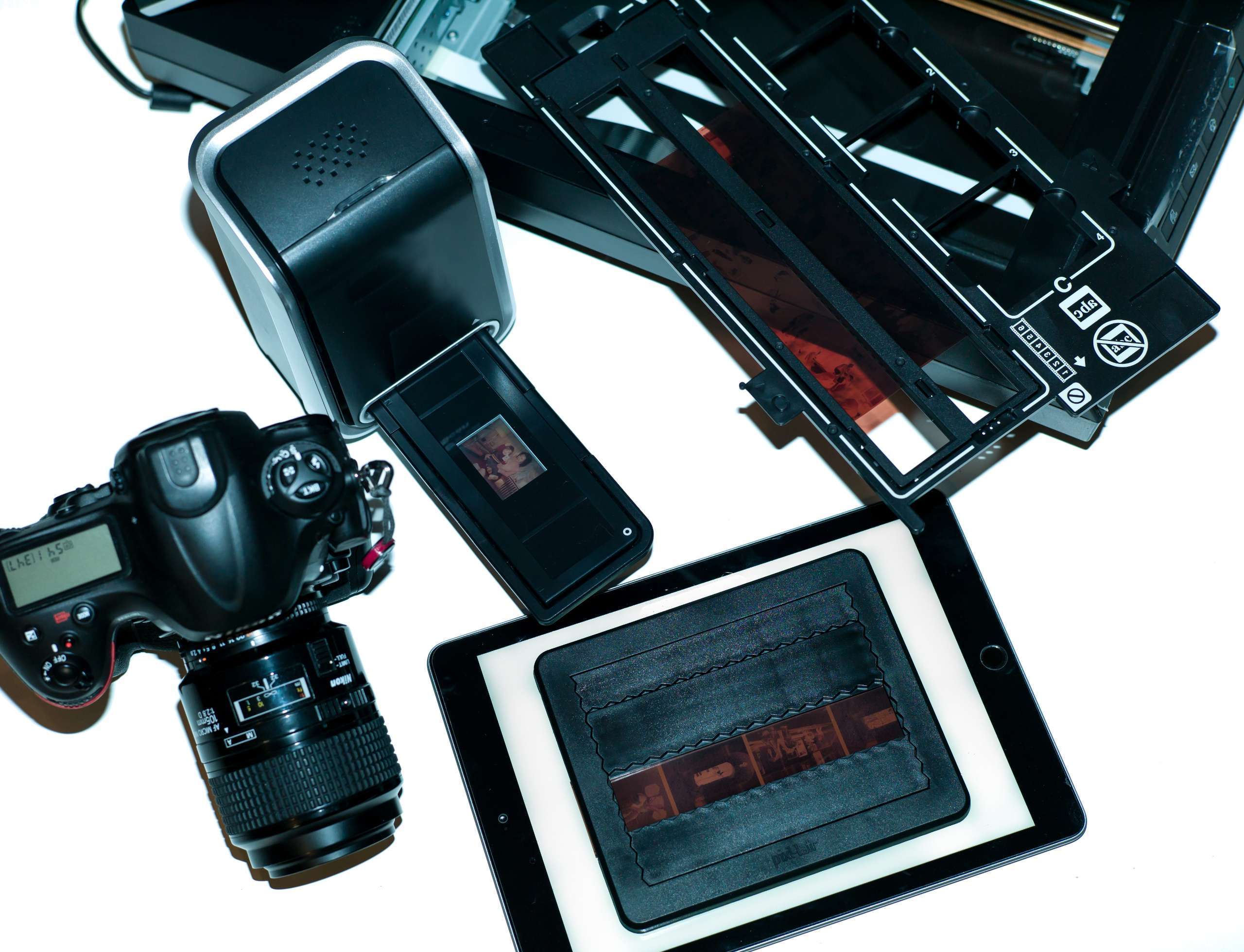Re-Photographing with a Digital Camera
There are many different tutorials on the internet concerning how to digitize with a digital SLR camera. Designs range from a simple slide attachment to finely subtle, self-designed constructions, that set the camera and images to a fixed distance and even more accurate alignment. Gifted craftsmen take it even further and combine their DSLR with a modified slide projector, transforming it into a digitizing machine that can handle large quantities of slides in a short amount of time.
This option is mainly for those who already have a very good full-frame digital camera. The acquisition of the necessary lenses and accessories for digitization presents a considerable cost factor and is far more expensive than the purchase of a film scanner especially designed for this task. Costs can range as high as several thousand dollars especially when you factor in the purchase of a camera. We recommend the use of a high-quality full-frame digital camera, that can achieve the required dynamic range for digitization. This is not the case with mid-range cameras, which are not capable of capturing a sufficient amount of image detail. It is also important that the resolution is high enough. Although there are professional cameras that offer up to 45 megapixels, it’s important to note that during digitization the commonly-used Bayer Matrix uses a 2/3 lower resolution.
It’s also important to consider that the images have to be absolutely flat. If you want your scanner’s holder to provide the necessary flatness, it’s important to keep this in mind and take appropriate action during assembly. Well-planned lighting is also important because reflections on the film’s surface are common.
In this workflow, image editing takes place after digitization. In this method, dust and scratches present on the images are transferred 1:1 into the digital image. They are then corrected either by hand or with a special plug-in like SRDx for Photoshop. In this case, there is no infrared-channel as there would be when working with a scanner with an automatic dust and scratch removal option.
If you want to capture your negatives, you are confronted with the difficulty of first developing them into positives. The correct conversion of the orange mask present on negative films presents a special challenge, that is usually carried out by the scanning program itself. SilverFast, for example, has a NegaFix tool, which offers presets for many common types of film. In re-photography, conversion usually has to be performed in the image editing software by hand. Many programs now offer a basic negative/positive conversion option. However, these fail to consider the different orange masking of individual films. If the orange masking is not properly removed, images with low contrast and color cast are the result.



